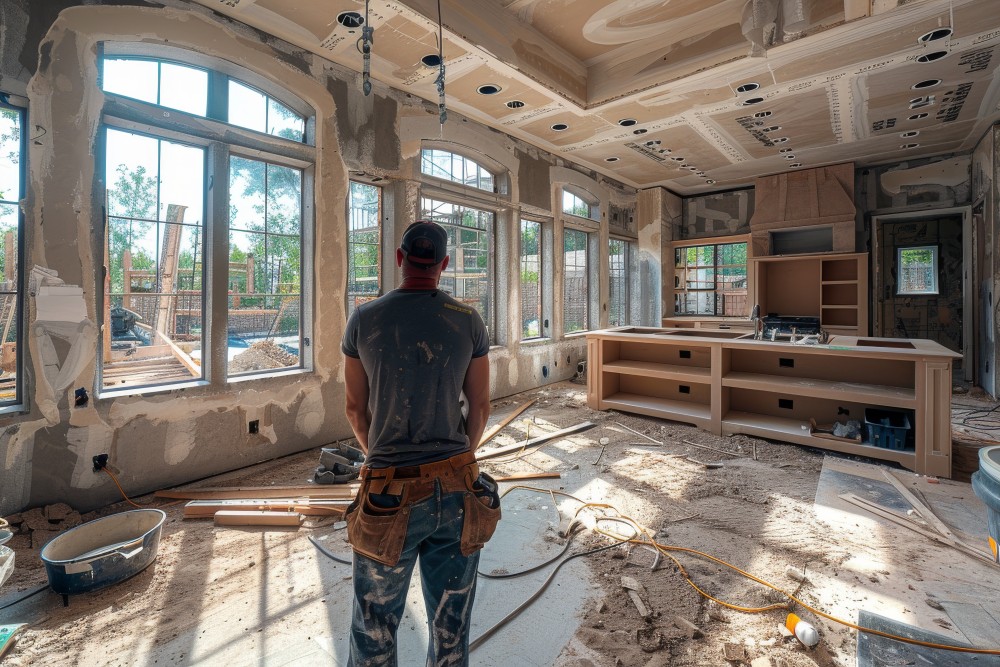1. Choose the Right Contractor
Research and Recommendations
- Referrals: Seek referrals from friends, family, and neighbors who have had successful renovation projects. Personal recommendations are often the most reliable.
- Online Reviews: Check online reviews and ratings on platforms like Yelp, Google, and the Better Business Bureau (BBB) to gauge the contractor’s reputation.
Verify Credentials
- Licensing: Ensure the contractor is licensed to operate in your state. Verify their license through your state’s licensing board.
- Insurance: Confirm that the contractor has general liability insurance and workers’ compensation insurance to protect against accidents and damages.
Interview Multiple Contractors
- Comparison: Interview multiple contractors to compare their approaches, experience, and pricing. Ask about their previous projects and request references.
- Communication: Choose a contractor who communicates clearly and listens to your needs. Effective communication is key to a successful project.
2. Detailed Planning and Documentation
Written Contract
- Scope of Work: Ensure the contract includes a detailed scope of work outlining all tasks, materials, and labor required for the project.
- Timeline: Include a clear timeline with start and completion dates, as well as milestones for different phases of the project.
- Payment Schedule: Specify the payment schedule, linking payments to project milestones or completion percentages.
Specifications and Drawings
- Detailed Plans: Provide detailed architectural drawings and specifications for the contractor to follow. These should include dimensions, materials, finishes, and any other relevant details.
- Change Orders: Include a process for handling change orders in the contract. Any changes to the scope of work should be documented and approved in writing.
Join HICP Homeowner’s Alliance
Connect with experts, get special discounts and enjoy member benefits
3. Use High-Quality Materials
Material Selection
- Durability: Choose high-quality, durable materials that will withstand wear and tear over time. Avoid cutting corners with cheaper, lower-quality options.
- Suitability: Ensure the materials are suitable for the specific application and climate conditions. For example, select moisture-resistant materials for bathrooms and kitchens.
Supplier Reputation
- Reputable Suppliers: Purchase materials from reputable suppliers known for quality and reliability. Avoid unknown or unverified sources.
- Warranties: Check for warranties on materials to ensure they are backed by the manufacturer.
4. Regular Monitoring and Inspections
Site Visits
- Frequent Visits: Conduct regular site visits to monitor progress and ensure work is being completed to your satisfaction. Address any issues or concerns promptly.
- Detailed Inspections: Inspect key stages of the project, such as framing, electrical, plumbing, and finishing, to ensure they meet your expectations and building codes.
Third-Party Inspections
- Professional Inspections: Hire a third-party inspector to perform periodic inspections and provide an objective assessment of the work quality.
- Building Code Compliance: Ensure all work complies with local building codes and regulations. Obtain necessary permits and schedule inspections as required.
5. Maintain Open Communication
Regular Updates
- Scheduled Meetings: Hold regular meetings with your contractor to discuss progress, address concerns, and make decisions. Weekly or bi-weekly meetings can help keep the project on track.
- Progress Reports: Request regular progress reports from your contractor, including photos and written updates.
Clear Instructions
- Documentation: Provide clear and detailed instructions for any changes or additions to the project. Ensure all communications are documented in writing.
- Feedback: Offer constructive feedback to the contractor and their team. Positive reinforcement and clear expectations can improve workmanship.
6. Address Problems Promptly
Timely Intervention
- Identify Issues Early: Address any issues or concerns as soon as they arise to prevent them from escalating. Regular site visits and inspections can help identify problems early.
- Problem-Solving Approach: Work collaboratively with the contractor to find solutions to any issues. Maintain a problem-solving mindset rather than an adversarial one.
Document Resolutions
- Written Records: Document all discussions and resolutions in writing. This creates a paper trail that can be useful if disputes arise later.
- Amendments: Make necessary amendments to the contract to reflect any changes or resolutions agreed upon.
7. Final Inspection and Approval
Completion Checklist
- Punch List: Create a punch list of any remaining tasks or touch-ups needed before final approval. Review this list with your contractor and ensure all items are addressed.
- Final Walkthrough: Conduct a final walkthrough with the contractor to inspect the completed work and ensure it meets your expectations.
Formal Acceptance
- Sign-Off: Formally sign off on the project once all work is completed to your satisfaction. Ensure any warranties and documentation are provided by the contractor.
- Final Payment: Make the final payment only after the project is completed and you are fully satisfied with the workmanship.
Conclusion
Ensuring quality workmanship in home renovations requires careful planning, thorough research, regular monitoring, and open communication. By choosing the right contractor, using high-quality materials, maintaining detailed documentation, and addressing issues promptly, you can protect your investment and achieve a successful renovation project. Remember, the key to a smooth and satisfying renovation experience is proactive management and clear communication with your contractor.



















